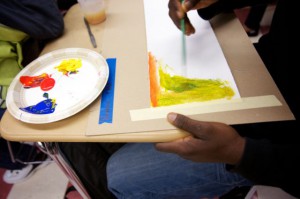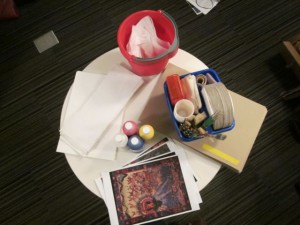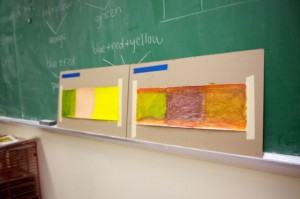For me, designing an art making lesson plan sometimes feels like alchemy, or more appropriately, baking. If I have all the right ingredients, organized and measured (and sometimes color-coded if Im working with more than one class on the same project), then things will follow a natural and gently guided progression and at the end of the class the results will be just as I hoped. When I prepare to teach a class, I fear that if one detail is off, one ingredient measured incorrectly, Ill have the equivalent of the exploding cupcakes my sister and I once made in the oven as kids when we made up a recipe that included an excessive amount of baking powder.
However, when I teach art making this is my struggle: It is likely that the opportunity I was provided to experiment with baking ingredients as a kid, helped form the person I am today in the kitchen I love cooking and am always willing to try new things and take risks, often combining various recipes together to create something entirely new. How do I make sure to teach techniques and art making skills to students, root that teaching in the art of the Himalayas, and still provide an opportunity for students to experiment and find their own way?
This week in the Thinking Through Art program at Liberty High School we introduced how paint is made for traditional thangka paintings, the concept of background, using images of Buddha Shakyamuni, and reinforced last weeks lesson on color mixing using acrylic paint on canvas. By the end of the day 75 students had each painted the background for their painting project with unique colors they mixed themselves using only the primary colors and white.
Here are the carefully organized, counted, sorted and color-coded supplies we used (Note: red buckets because we are working in classrooms without sinks – a trick I picked up from a colleague at some point along my path as a teaching artist one bucket for dirty paint water and one for clean water.):
Here is an example of the work-in-progress:
So, did students learn technique, connect their own art making to art of the Himalayas, and still find room for experimentation? I hope so!





